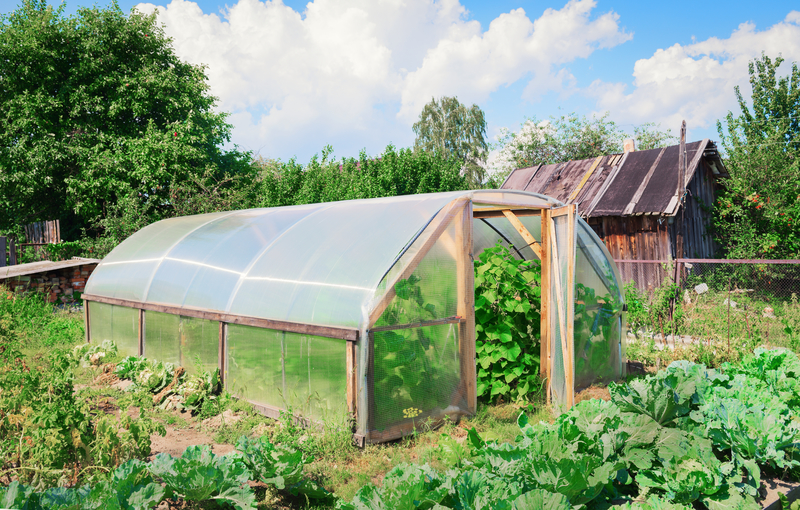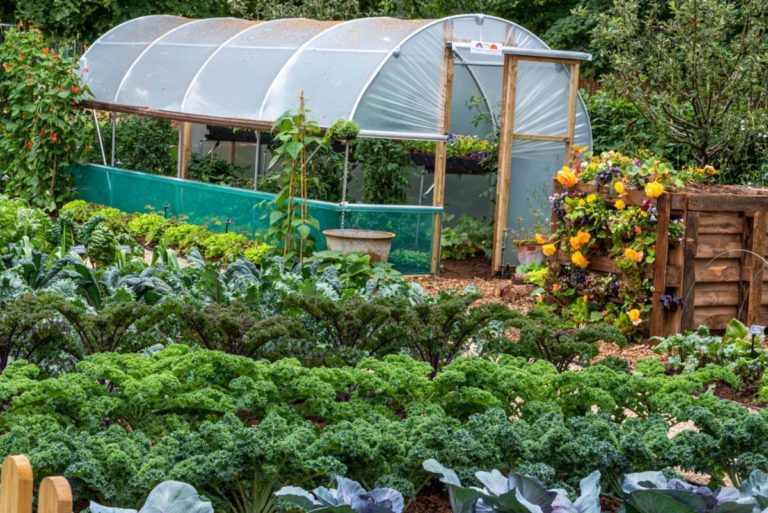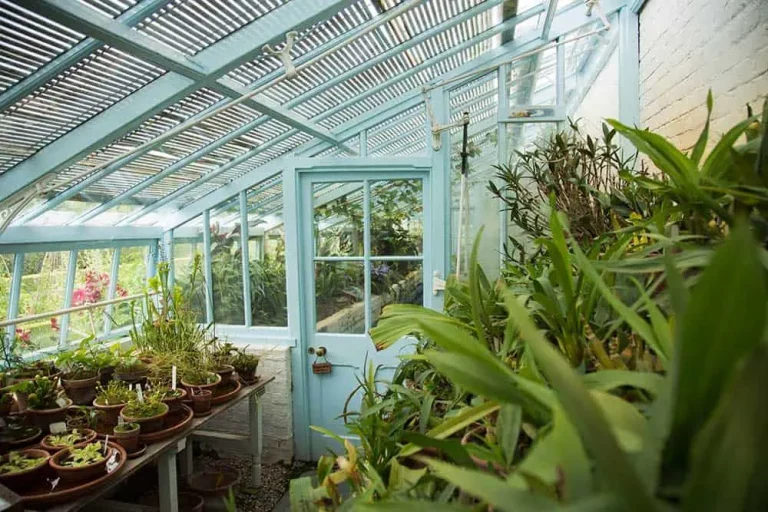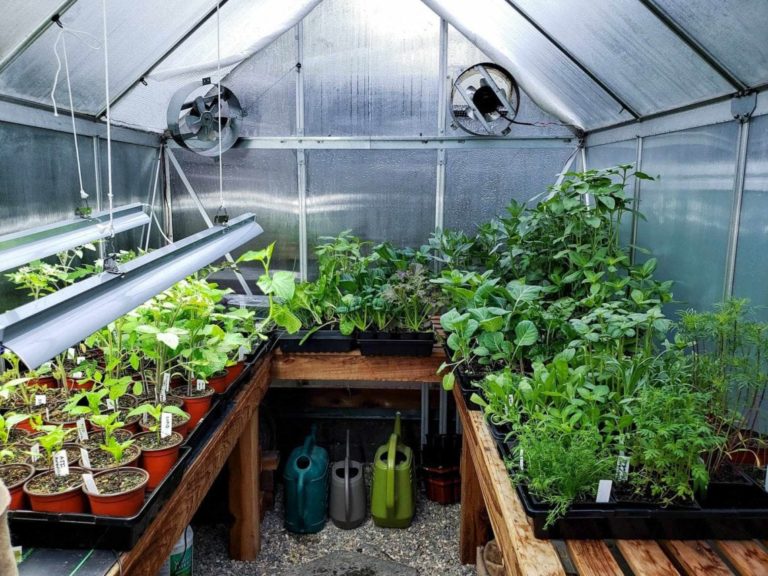When it comes to setting up a successful greenhouse, location is key.
The right spot can provide optimal growing conditions and boost productivity, while the wrong one can lead to subpar yields and increased maintenance costs.
So, what factors should you consider when selecting the perfect place for your greenhouse?
Let’s dive into the essential criteria that will help you choose a location that meets all your needs and ensures your greenhouse thrives.
From sunlight exposure to wind protection, we’ll explore it all in this guide.
Start by identifying the best location for your greenhouse today!
Sunlight and Temperature
Look for a location that receives adequate sunlight and has a consistent temperature range. Most greenhouse crops require at least 6 hours of direct sunlight per day, and the ideal temperature range is between 65-75°F (18-24°C).
Greenhouse crops require adequate sunlight to grow and thrive, so look for a location that receives at least 6 hours of direct sunlight per day.
The ideal temperature range for most greenhouse crops is between 65-75°F (18-24°C), as this allows for optimal growth and development.
Temperatures that are too high or too low can cause stress and damage to the plants, so it’s important to maintain a consistent temperature range within this ideal range.
It’s important to consider the type of greenhouse you plan to use, as some greenhouses may require more or less sunlight and temperature control depending on the specific crop you plan to grow.
By considering these factors, you can ensure that your greenhouse crops receive the optimal conditions for growth and success.
Soil Quality
Choose a location with well-draining soil that is rich in organic matter. Greenhouse crops prefer a slightly acidic soil pH (5.5-6.5) with good water retention.
When selecting a location for your greenhouse crops, it is important to consider the soil quality.
Look for a site with well-draining soil that is rich in organic matter.
Soil with good drainage is essential to prevent waterlogging, which can lead to root rot and other issues.
Ideally, the soil should have a slightly acidic pH (5.5-6.5) to provide optimal growing conditions for your crops.
This pH range allows for the best availability of essential nutrients and facilitates the absorption of nutrients by plant roots.
Well-draining soil with good water retention capabilities ensures that your crops receive adequate moisture without excessive waterlogging, which can cause root rot and other problems.
By selecting a location with soil that meets these criteria, you can provide your greenhouse crops with the best possible growing conditions, leading to healthy growth and high yields.
Water Availability
Make sure that there is a reliable source of water for irrigation, as greenhouses require consistent moisture levels. Consider the distance to a water source and the feasibility of installing a water supply system.
Water availability is a important factor to consider when building a greenhouse.
Greenhouses require consistent moisture levels to support healthy plant growth, and a reliable source of water for irrigation is essential.
Before constructing a greenhouse, it’s important to assess the distance to a water source and the feasibility of installing a water supply system.
This includes considering the cost and logistics of installing a well, pond, or irrigation system, as well as the potential impact on the local water table and surrounding ecosystem.
It’s important to consider the water quality and determine if any treatment or filtration systems are needed to ensure the water is suitable for irrigation.
By carefully assessing water availability and determining the best water source for your greenhouse, you can ensure a consistent and reliable supply of water for optimal plant growth and success.
Site Preparation
Consider the time and effort required to prepare the site for your greenhouse. This may involve clearing land, leveling the ground, and installing utilities like electricity and water.
Site Preparation: A Critical Step for Your Greenhouse Success
Site preparation is a important step in setting up your greenhouse, as it lays the foundation for the entire project.
Before you begin constructing your greenhouse, you need to consider the time and effort required to prepare the site.
This may involve clearing the land, leveling the ground, and installing essential utilities like electricity and water.
Clearing the land is the first step in preparing the site for your greenhouse.
This involves removing any debris, trees, or rocks that may be present on the land.
You can use heavy machinery like bulldozers or excavators to clear the land quickly and efficiently.
After clearing the land, you need to level the ground to ensure that your greenhouse is built on a stable and even surface.
This will require the use of heavy machinery like graders or bulldozers to compact and smooth out the soil.
Once the site is leveled, you can begin installing essential utilities like electricity and water.
You will need to hire a professional to install these utilities, as they require specialized skills and equipment.
The electricity will power the lights, heaters, and other equipment in your greenhouse, while the water will be used for irrigation and other needs.
Site preparation is a critical step in setting up your greenhouse.
It requires careful planning, the use of heavy machinery, and professional installation of essential utilities.
By investing the time and effort required to prepare the site properly, you can ensure that your greenhouse is built on a stable and even surface, and that you have access to the essential utilities you need to grow healthy and thriving plants.
Wind Protection
Greenhouses are sensitive to wind damage, so choose a location that provides some level of wind protection. This may be achieved through natural windbreaks like trees or constructed barriers like windbreaks or screens.
When it comes to wind protection, greenhouses are particularly sensitive to damage caused by strong gusts.
Harsh winds can not only cause structural damage to the greenhouse itself, but they can also damage or destroy plants, irrigation systems, and other vital components within the greenhouse.
To minimize the risk of wind damage, it is essential to choose a location that provides some level of wind protection.
Natural windbreaks like trees or constructed barriers like windbreaks or screens can effectively protect your greenhouse from the elements.
Natural windbreaks, such as trees or hills, can provide a buffer against strong winds.
These barriers can help to reduce wind speed and create a more protected environment for your greenhouse.
Constructed barriers like windbreaks or screens can be specifically designed to block wind and minimize the risk of damage.
These barriers can be made of a variety of materials, including mesh, fabric, or even solid walls.
By choosing a location with some level of wind protection, you can help to ensure the longevity and success of your greenhouse.
Proximity to Market
If you plan to sell your crops directly, choose a location that is proximal to your target market. This may help reduce transportation costs and increase the freshness of your produce.
Choosing a location that is proximal to your target market is a important factor to consider when planning a sustainable farm.
By being closer to your customers, you can significantly reduce transportation costs and increase the freshness of your produce.
This is particularly important if you plan to sell your crops directly to consumers, as it will allow you to maximize your profits and provide your customers with the highest quality products.
Proximity to market can also help you to respond quickly to changing market conditions and customer preferences.
By being close to your target market, you can easily gather feedback from your customers and make adjustments to your production and marketing strategies accordingly.
This can help you to stay competitive and achieve long-term success in your farming business.
Moreover, choosing a location that is proximal to your target market can also help you to build strong relationships with your customers.
By being nearby, you can easily connect with your customers and provide them with a personalized experience.
This can help to build trust and loyalty, which are essential for a successful farming business.
Proximity to market is a key consideration for any sustainable farming business.
By choosing a location that is proximal to your target market, you can reduce transportation costs, increase the freshness of your produce, respond quickly to changing market conditions, and build strong relationships with your customers.
This will help you to achieve long-term success and financial stability in your farming business.
Regulations and Zoning
Familiarize yourself with local regulations and zoning restrictions before selecting your greenhouse location. Some communities may have specific requirements for greenhouses, such as setbacks from property lines or restrictions on building heights.
Before you start building your greenhouse, it’s essential to familiarize yourself with local regulations and zoning restrictions in your area.
These regulations can vary greatly depending on the community, county, or state where you plan to build your greenhouse.
Some communities may have specific requirements for greenhouses, such as setbacks from property lines or restrictions on building heights.
For instance, some areas may require a certain distance between the greenhouse and the property line, or they may restrict the height of the greenhouse to ensure it blends in with the surrounding landscape.
Some communities may have specific zoning laws that designate areas for agricultural use only.
It’s important to ensure that your greenhouse location meets these zoning requirements to avoid any legal issues or penalties.
By researching local regulations and zoning restrictions beforehand, you can avoid costly mistakes and ensure a smooth and successful greenhouse building project.
It’s also important to note that some communities may offer incentives or tax breaks for agricultural projects, such as greenhouses.
By understanding the local regulations and zoning restrictions, you can take advantage of these incentives and save money on your project.
By doing so, you can avoid legal issues, ensure compliance with local laws, and take advantage of any available incentives or tax breaks.
Always prioritize compliance and consult with local authorities to ensure a successful and sustainable greenhouse project.
Aesthetics
While functional considerations are paramount, don’t overlook the aesthetic appeal of your chosen location. A well-designed greenhouse can enhance the beauty of your landscape and provide a pleasant working environment.
While it is important to focus on the functional aspects of a greenhouse, such as temperature control, lighting, and irrigation systems, don’t neglect to consider the aesthetic appeal of your chosen location.
A well-designed greenhouse can not only be a functional and productive space, but it can also enhance the beauty of your landscape and provide a pleasant working environment.
Aesthetic considerations such as the style and color of the greenhouse, the material used for the frame and coverings, and the layout of the interior can all contribute to a visually pleasing space that complements your overall landscape design.
For example, a greenhouse with a modern, sleek design can create a striking contrast with the lush, natural surroundings, while a more traditional or rustic-style greenhouse can blend seamlessly into the existing landscape.
Thoughtfully placed windows, skylights, and vents can create a bright, airy space that feels more like a garden room than a utilitarian greenhouse.
By incorporating aesthetic considerations into your greenhouse design, you can create a space that not only provides optimal growing conditions for your plants, but also adds beauty and functionality to your landscape.
Want More? Dive Deeper Here!
Hey there! If you’re the type who loves going down the rabbit hole of information (like we do), you’re in the right spot. We’ve pulled together some cool reads and resources that dive a bit deeper into the stuff we chat about on our site. Whether you’re just killing time or super into the topic, these picks might just be what you’re looking for. Happy reading!
- How to site a greenhouse to receive the most sun | Extension
- Greenhouse & Floriculture: Selecting and Building a Commercial Greenhouse | Center for Agriculture, Food, and the Environment at UMass Amherst
- Greenhouse & Floriculture: Design and Layout of a Small Commercial Greenhouse Operation | Center for Agriculture, Food, and the Environment at UMass Amherst
- The Hobby Greenhouse | Oklahoma State University
- Hobby Greenhouses | UGA Cooperative Extension






